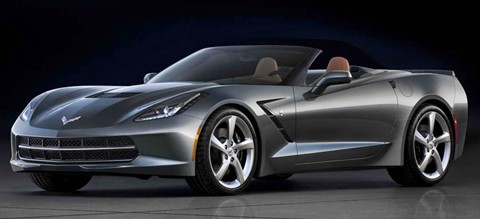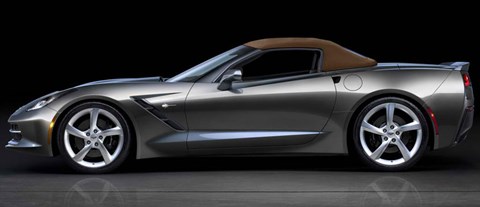A few years ago, during the darkest hours of the GM bankruptcy, Corvette chief engineer Tadge Juechter found himself on a conference call with company execs and government overseers. A conversation on the bolts and screws of bailing out GM suddenly halted when one of the federales, a Corvette fan, wanted to know the plan for the C7. “At the time, there was no plan,” recalled Juechter as we stood trackside at Road Atlanta this past October. “We were at full stop.”
So much has happened since then. Flash-forward to 2014 and the scene of our own technical director, Don Sherman, banging on the door of Juechter’s home like some marauding zombie early one summer Saturday, intent on hand-delivering our October issue, which featured an exposé on the C8 Corvette. And to our later meeting at Road Atlanta, where the new Z06 sat freshly unwrapped and awaiting its ritual molestation by car writers. Whatever satisfaction an engineer derives from his or her ideas becoming realized, from seeing mere talk and drawings evolve into a finished product, must increase tenfold in the Corvette program, once an idle afterthought in the mayhem of a bankruptcy and now a full line of highly acclaimed vehicles.
Details such as a 60-mph nuking of three seconds flat, set by a Z06 equipped with the Z07 Performance package and an automatic. This car tore the quarter-mile a new one at 11.1 seconds at 127 mph, scorched the skidpad with 1.19 g’s of grip, and stopped from 70 in an astonishing 128 feet, the latter two figures setting C/D records for a production car. We also tested a slightly less potent manual-trans Z06
Back to the test numbers: Um, holy crap. Riding a Z06 through the first four gears feels like putting a saddle on Superman, though the Z06 is 200 pounds heavier than the old ZR1. Obviously, there’s a squidge more power, but this is down to the race tires and the fact that today’s automatics are often faster than manuals in a straight line. We didn’t even use launch control, a simple flat-foot drop in full auto mode being all that was needed to produce these fireworks from the test equipment.
We drove both the manual and the automatic Z06 and feel that the stick, with its notably soft and seamless clutch takeup, is still the best choice. Rev matching sounds like a hateful automation of the heel-and-toe skill until you get used to it. Then you wonder why all manuals don’t have it. Or just turn it off. Or use it to learn proper rev matching and then turn it off.
The automatic gets its robot chores done efficiently, but it’s the one area where we found the Z06 falls a little short of its billing. GM claims that the automatic does the work of the manual by quickly intuiting your intentions and behaving like a racer, taking data from the throttle, steering, and yaw sensors to determine whether a gearchange is possible or likely to unsettle the car. It does that fairly well, but when you’re really playing racer boy, the auto can get caught in the wrong gear, especially if you like left-foot braking and easing off the binders while simultaneously squeezing on the power. That sends ones and zeros up the transmission’s snoot that it doesn’t like.
Chevy’s choice of wild, bucking Road Atlanta as a launch venue proved both wise and a bit brave. This fast but highly technical track let the Z06 stretch its legs all the way up to 150-plus mph on the back straight, while also taxing its suspension and grip over crests and curbs. The Z06 immediately showed itself to be a Corvette Plus: plus more speed, more grip, more hunkered-down stability at triple digits, more noise, and a lot more stopping power.
It’s precisely the Corvette’s long inseam that gives it stability over curbs and pavement pitches that would upset a shorter car. That and shock-tuning sophistication (engineers were fussing with the magnetic-shock maps right up until our drive, deciding to relax them slightly in track mode) let the chassis digest the worst the road can deliver. The Z06 eats track curbs and moves on. Stability. That’s the word on your quavering lips when you emerge after the first session.
Afterward, if you’ve optioned the Performance Data Recorder that comes with the navigation system, you and your team can watch the video replay of your exploits, complete with speed, rpm, g’s, track position (thanks to integrated GPS data), and lap times. The Z06 isn’t merely swift; it’s designed specifically to make you a better driver through the stair-step configurability of its controls and its onboard learning tools.
The Z06 does not transcend its roots; it’s still a Stingray, meaning wide, batwinged, loud, and full of numerous types of plastic. But once you’ve peeled back its many layers, the performance is that of a true supercar and yet another step forward for the American Dream Machine.
























